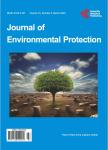Contribution of the Sensitivity Analysis in Groundwater Vulnerability Assessing Using the DRASTIC Method: Application to Groundwater in Dabou Region (Southern of Côte d’Ivoire)
Contribution of the Sensitivity Analysis in Groundwater Vulnerability Assessing Using the DRASTIC Method: Application to Groundwater in Dabou Region (Southern of Côte d’Ivoire)作者机构:Department of Sciences and Water Technology and Environment Engineering (Laboratory of Remote Sensing and Spatial Analysis Applied to Hydrogeology) Félix Houphouë t-Boigny University Abidjan Cô te d’Ivoire
出 版 物:《Journal of Environmental Protection》 (环境保护(英文))
年 卷 期:2016年第7卷第1期
页 面:129-143页
学科分类:081803[工学-地质工程] 08[工学] 0818[工学-地质资源与地质工程]
主 题:Pollution Groundwater Vulnerability DRASTIC Sensitivity Analysis
摘 要:The groundwater constitutes the main source of drinking water for the populations in the Dabou region which is marked by a multiplication of socio-economic activities. The quality of groundwater is increasingly tested by diverse sources of pollution caused by these human activities. In order to preserve their quality against any form of contamination, the present study aims to assess the groundwater vulnerability in this region and to highlight the relative importance of hydrogeological parameters which will be taken into account in this assessment. The assessment of the intrinsic vulnerability is to identify the most sensitive zones in order to prevent the groundwater pollution risks on the surface of the ground. To do it, the DRASTIC method is applied through a GIS. The GIS has also used to perform sensitivity analysis through the map removal and the single-parameter sensitivity analysis tests. The indexes calculated for the DRASTIC vulnerability map vary from 95 to 187 of the North towards the South. This vulnerability map presents four classes: very high (26.22%) in the South and the East, high (37.71%) in the Center, the North-East and the North-West, moderate (34.73%) to the North and the West and low (1.34%) in the North. The DRASTIC vulnerability map is heavily influenced by the impact of vadose zone and the depth to water table according to the first test. For the second test, it is the impact of vadose zone, the aquifer media and the soil media which have a more significant impact on the vulnerability map. Both sensitivity analysis tests confirm that the impact of vadose zone therefore sediment type is more implied in this assessment of the groundwater vulnerability in the Dabou region.



